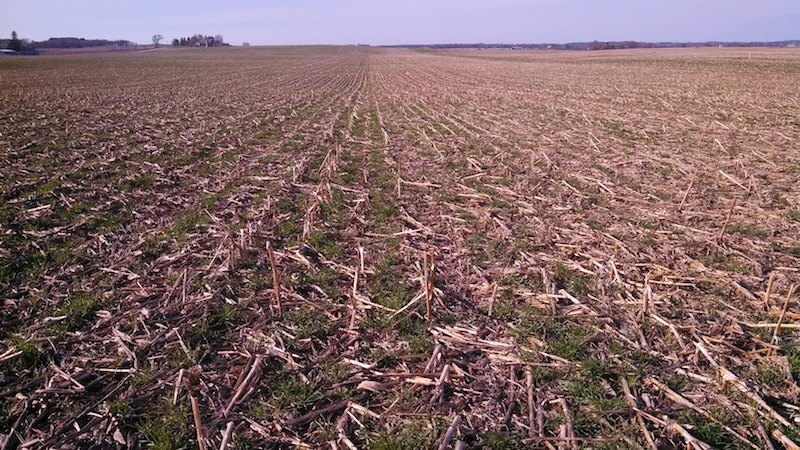July 11, 2014

These timely cover-crop aerial seeding tips come from Damon Reabe, a third-generation aerial applicator and president of Reabe Spraying Service, Waupun, Wis.
Avoid aerial seeding too early. You risk having your cover crop competing with the cash crop and lacking sufficient sunlight access beneath the canopy. Access to sunlight is the key to successful cover crop stand establishment.
Seed cover crops when soybean leaves are yellow, but before they drop. Too much green soybean canopy will shade cover crop seedlings, and fallen leaves will block seed-to-soil contact. If the soybean field does not mature evenly (a common problem), you are set up for a poor cover crop stand.
Time cover crop seed on corn. Do not fly cover crop seed on corn until the corn plant has senesced (dried out) up to the ear, or the new crop will lack critical sunlight access.
Spring barley and cereal rye are ideal cover crops for northern climates. Spring barley is popular with beginners because it is quick to germinate and easy to manage. Of all the grasses, it is the fastest growing and the largest nitrogen scavenger. Even when barley survives to the reproductive stage, the spring straw is not woody or difficult for tillage implements to manage. Spring barley has a very similar root system to oats.
If you want spring growth in northern climates, cereal rye does not winterkill.
Avoid seeding small-seeded legumes and Brassicas in northern climates. When seeded in mid-September, they lack enough time to become established before frost. Better odds exist for most grasses (such as winter rye, annual rye, barley and oats).
Avoid seeding large-seeded legumes. For example, peas and soybeans are likely to fail when seeded aerially because their seeding depth will be insufficient.
Cover-crop cocktails can be less practical to seed aerially. If you choose to vary your mixes across small acreages, it runs up your costs quickly.
Be sure your pilot calibrates his or her aerial applicator (see photo). Ask your applicator about their experience with dry-pattern testing (calibrating the aerial swath width), as recommended by the National Agriculture Aviation Association. Attention to dry-product dispensing is not new the industry; it dates back to the beginning of aerial application in the 1920s.
 You might also like:
You might also like:
Tips for giant ragweed control
About the Author(s)
You May Also Like




